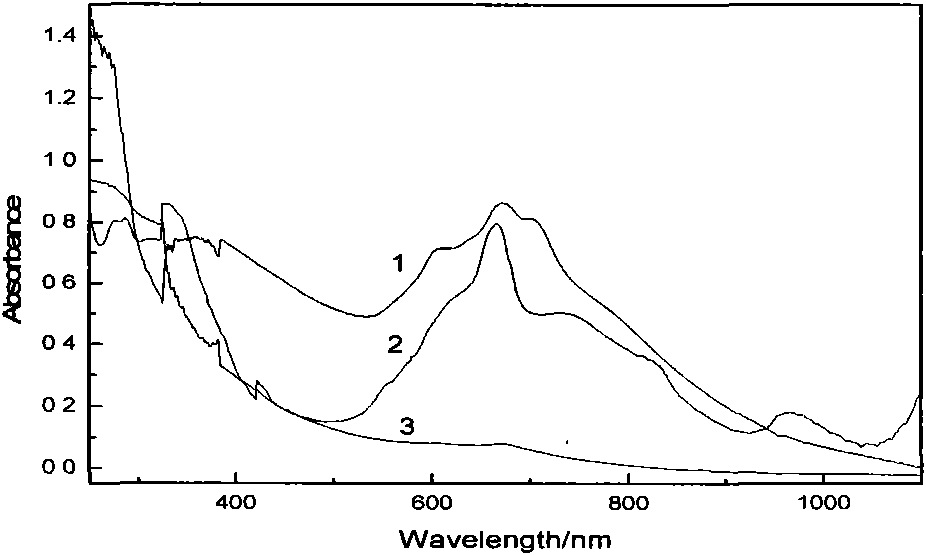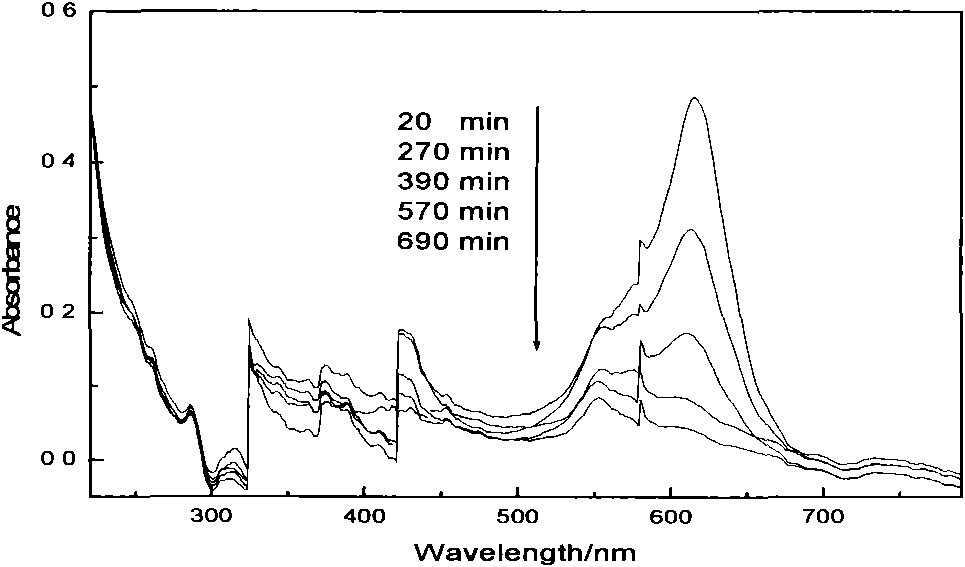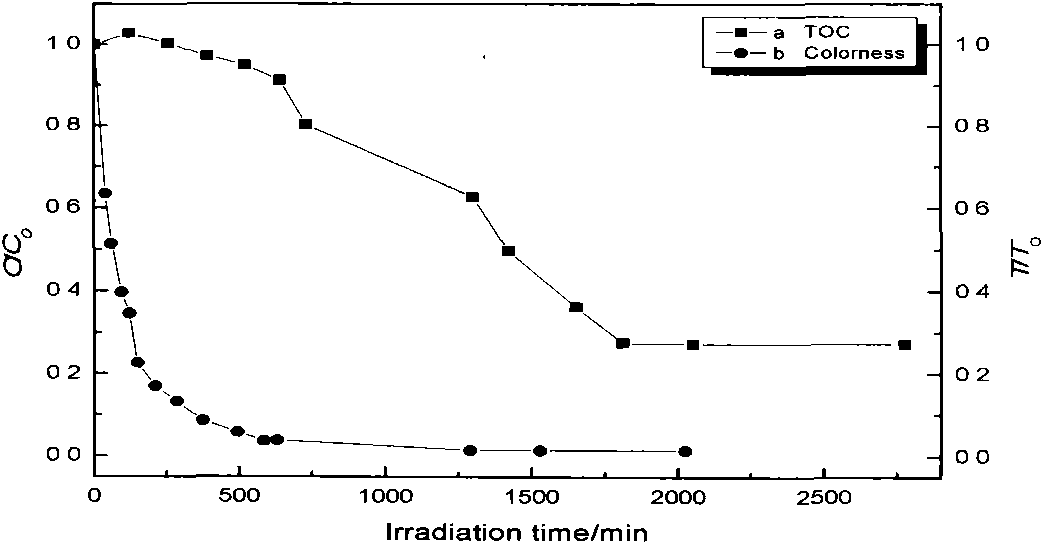Resin catalyst utilizing visible light to catalyze and degrade organic pollutants and preparation method thereof
A photocatalyst and catalyst technology, applied in organic compound/hydride/coordination complex catalysts, physical/chemical process catalysts, chemical instruments and methods, etc., to achieve the effects of easy separation, good light transmission, and easy operation
- Summary
- Abstract
- Description
- Claims
- Application Information
AI Technical Summary
Problems solved by technology
Method used
Image
Examples
Embodiment Construction
[0022] The invention is further illustrated by the following examples.
[0023] A) Preparation of crosslinked macroporous polystyrene-divinylbenzene copolymer (white ball)
[0024]In a three-necked flask, add 1200ml of 1% gelatin aqueous solution and an oil phase composed of 176.0g of styrene, 14.0g of divinylbenzene, 2.0g of benzoyl peroxide and 100.0g of liquid wax. Adjust the stirring speed to a suitable particle size, and raise the temperature to 80°C for 12 hours. Then cool for 2h, filter, and wash the polymer with hot water. Then extract with acetone for 8 hours, and finally vacuum-dry for 2 hours at a temperature of 60°C and a vacuum degree of 1333pa to obtain white balls.
[0025] 2. Chloromethylation of cross-linked macroporous polystyrene-divinylbenzene (chlorine balls)
[0026] In a 2000ml three-neck flask, add 200.0g white balls, use 1200ml chloromethyl ether to swell, then add 60.0g catalyst in batches, stir, and react at a temperature of 311K for 12h. After c...
PUM
 Login to View More
Login to View More Abstract
Description
Claims
Application Information
 Login to View More
Login to View More - R&D
- Intellectual Property
- Life Sciences
- Materials
- Tech Scout
- Unparalleled Data Quality
- Higher Quality Content
- 60% Fewer Hallucinations
Browse by: Latest US Patents, China's latest patents, Technical Efficacy Thesaurus, Application Domain, Technology Topic, Popular Technical Reports.
© 2025 PatSnap. All rights reserved.Legal|Privacy policy|Modern Slavery Act Transparency Statement|Sitemap|About US| Contact US: help@patsnap.com



